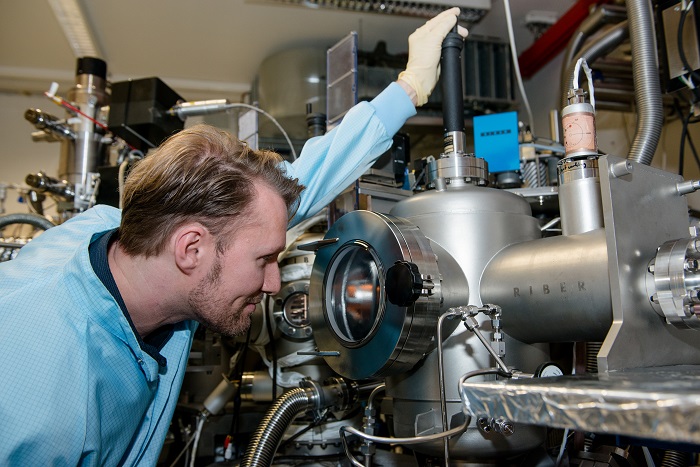26.07.2016
A research team from Germany, France and Switzerland has realised quantum bits, short qubits, in a new form. One day, they might become the information units of quantum computers. To date, researchers have realised qubits in the form of individual electrons (http://aktuell.ruhr-uni-bochum.de/pm2012/pm00090.html.en). However, this led to interferences and rendered the information carriers difficult to programme and read. The group has solved this problem by utilising electron holes as qubits, rather than electrons. A report has been published in the journal “Nature Materials” by a team of researchers from Ruhr-Universität Bochum, the University of Basel, and Lyon University; among its contributors were the two Bochum-based researchers Prof Dr Andreas Wieck and Dr Arne Ludwig from the Chair of Applied Solid State Physics. The project was headed by the Swiss researcher Prof Dr Richard Warburton.
Electrons as qubits
In order to realise qubits in the form of electrons, an electron is locked in a tiny semiconductor volume, the so-called quantum dot. The spin turns the electron into a small permanent magnet. Researchers are able to manipulate the spin via an external magnetic field and initiate precession. The direction of the spin is used to code information. The problem: the nuclear spins of the surrounding atoms also generate magnetic fields, which distort the external magnetic field in a random, unpredictable manner. This, in turn, interferes with programming and reading qubits. Consequently, the team searched for another method. The solution: rather than locking individual electrons in the quantum dot, the team removed specific electrons. Thus, positively charged vacancies were generated in the electron structure, so-called electron holes.
Advantages of electron holes
Electron holes have a spin, too. Researchers can manipulate it via the magnetic field in order to code information. As the holes are positively charged, they are decoupled from the nuclei of the surrounding atoms, which are likewise positively charged. This is why they are virtually immune against the interfering forces of the nuclear spin. “This is important if we one day want to manufacture reproducible components that are based on quantum bits,” explains Andreas Wieck. However, this method is only applicable at low temperatures, as the holes are more likely to be disturbed by warmth than the electrons. At Ruhr-Universität, researchers are able to generate quantum dots of outstanding quality. The experiment could be conducted thanks to a structural design developed by Arne Ludwig in Basel and subsequently realised at the RUB Department headed by Andreas Wieck. It enabled the researcher to apply not just individual electrons to quantum dots, but also electron holes. Sascha René Valentin, PhD student from Bochum, utilised the technique for the purpose of the current study.
Funding
The project was funded by the German Research Foundation (DFG TRR160), The Federal Ministry of Education and Research (Q.com-H 16KIS0109), the European Union in the FP7 Programme (IPN S3NANO), the National Centre of Competence in Research “Quantum Science and Technology” and the Swiss National Science Foundation (200020 156637).
Original publication
Jonathan H. Prechtel, Andreas V. Kuhlmann, Julien Houel, Arne Ludwig, Sascha R. Valentin, Andreas D. Wieck, Richard J. Warburton (2016): The hole spin qubit: decoupling from the nuclear spins, in: Nature Materials, 2016, DOI: 10.1038/nmat4704















